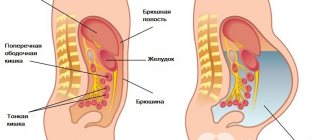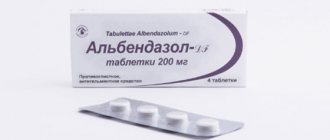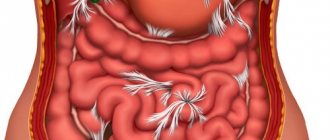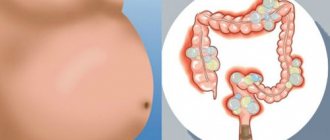The text is presented for informational purposes only. We strongly urge you not to self-medicate. When the first symptoms appear, consult a doctor. We recommend reading: “Why you can’t self-medicate?”
Measles is an infectious disease of viral etiology, manifested by damage to the respiratory tract, fever, intoxication, and maculopapular rash.
After suffering from measles, lasting immunity occurs. In recent years, preventive vaccinations against this disease have been carried out.
Every year, children around the world die from measles. This infection greatly weakens the human immune system and attacks blood vessels from the inside, as evidenced by the rapid spread of the rash.
The measles virus is transmitted by airborne droplets, which contributes to the rapid spread of infection. Persons of all ages who do not have measles immunity become ill.
How can you get infected?
The causative agent of the disease is an RNA virus belonging to the genus Morbillivirus. Unstable in the external environment, inactivated when exposed to direct sunlight, drying, heating to 50 ° C. The virus persists at room temperature for one to two days; when cooled to -20 °C, the pathogen remains viable for several weeks.
The source and carrier of the infection is a sick person. The release of the virus into the environment begins in the last 1-2 days of the incubation period, the entire catarrhal stage, and ends within 4 days of the rash phase. Sometimes the contagiousness time lasts up to 10 days. The causative agent of measles is transmitted by airborne droplets via the aerosol mechanism. A sick person releases the virus when he sneezes, coughs, or normally exhales.
People are very susceptible to the measles virus; after the illness, lifelong immunity remains. As a rule, children of preschool age are affected; in adults, the infection is rare and difficult to tolerate. The peak incidence is observed in the spring-winter period. Due to mass routine vaccination, the number of measles cases has decreased significantly.
Source of infection
The source of measles can only be a sick person. Even if the incubation period has not yet ended and the patient has not shown any symptoms of the disease, he may already pose a threat to the release of the virus and thereby the possibility of infection for others. People who are asymptomatic are also considered infectious. Vaccinated people who have natural reactions to the vaccine do not pose a danger to others, even if they have a fever or rash.
The causative agent of measles - what is known about the virus?
The measles virus is a single strand of RNA coiled into a spiral. It is surrounded by a shell (capsid) of proteins and lipids. And on top of this organism is covered with another protective shell with spine-like projections. The virus has a regular round shape and small dimensions of 120-230 nm.
Properties of measles virus:
- The hemagglutination activity of the virus (glues red blood cells into flakes) helps laboratory technicians identify the measles virus in the blood.
- The hemolytic activity of the virus (causes the destruction of red blood cells and is accompanied by the release of hemoglobin into the blood) is also used in laboratory diagnostics.
- The virus causes the formation of multinucleated giant cells. They appear as a result of the fusion of neighboring cells in the tonsils, lymph nodes, and the mucous membrane of the respiratory tract. Their function is to produce new viruses.
- The causative agent of measles increases capillary permeability. The liquid component of the blood comes out through their wall, which causes a runny nose, wet cough, conjunctivitis, and swelling in the superficial areas of the skin.
- It mainly affects the epithelial cells of the upper respiratory tract, which manifests itself in inflammation of the conjunctiva, throat, larynx, and trachea. Measles also affects the cells of the nervous system. This is associated with severe intoxication, sometimes convulsions and loss of consciousness, inflammation of the membranes of the brain (meningitis). The intestinal mucosa also suffers, causing indigestion.
- Protein particles of the virus shell cause an allergic reaction, which underlies most of the symptoms of the disease: Filatov-Koplik-Velsky spots on the mucous membrane of the cheeks and lips, a rash on the skin and mucous membrane of the palate.
- A decrease in immunity is associated with the fact that the virus attacks lymphoid tissue and brain structures that are responsible for immune reactions.
- The virus reduces the activity of macrophages, which are considered bacteria eaters and provide protection against infections. In this regard, 30% of cases end in bacterial complications (pneumonia, otitis, encephalitis).
- Congestion of blood vessels and damage to their walls by the virus causes hemorrhages on the skin and eyes.
- Penetrating into a cell, the measles virus rearranges it in such a way that it turns into a factory for the production of new viruses. The cell produces RNA helices and protein shells for capsids.
- When the virus enters the environment, it dies quite quickly. It does not tolerate sunlight, UV irradiation, high temperatures, and any acids or disinfectants. It dies on its own after 2-3 hours, so disinfection for measles may not be carried out.
The source of infection is a sick person. It becomes contagious already in the last 2 days of the incubation period, when there are still no signs of illness. The virus is released from the body before the 4th day of the rash. That is, a person remains dangerous to others for 7-10 days. The measles virus is transmitted through the air by airborne droplets, droplets of saliva and mucus, when coughing and talking.
When is a patient most dangerous to others?
By the middle of incubation, all organs are infected. The cause of measles symptoms is the second wave of viremia with the release of particles from cells into the blood. On the first day of illness, a rash appears, which will mark the second wave of reproduction of the infectious agent, which has completely permeated the entire body. The patient emits the maximum number of particles. The measles virus is found in saliva, tears, urine and feces, that is, everywhere.
By the fifth day of clinical manifestations, there is no longer any need to fear the patient, the reason is that the viral particles have died and the patient is no longer contagious. There are only antibodies in the blood, but the pest itself is no longer there.
An examination at the Medicine 24/7 clinic will allow you to dot the i’s, for this you have everything you need: modern equipment, the ability to perform complex tests, universal specialists who have completed internships in leading medical centers.
First signs
When measles occurs in adults, the clinical picture is the same as in children, but the symptoms are more pronounced. The main manifestations of this infectious lesion are:
- increase in body temperature (fever) up to 38-40 °C;
- weakness;
- headache;
- decreased appetite;
- hard breathing;
- conjunctivitis;
- inflammation of the upper respiratory tract;
- hacking dry cough;
- hoarseness of voice;
- large red or pink spots on the roof of the mouth (measles enanthema);
- rash and pigmentation on the entire skin;
- disturbance of consciousness (delirium, fainting, etc.);
- peeling, skin pigmentation;
- bruising;
- intestinal dysfunction.
The difference between measles in adults and measles in children
Any “childhood” infection in adults is much more severe than in children, and measles is no exception. In addition to the general similarity of measles symptoms, in adults the symptoms have distinctive features:
- Body temperature is very high 40C-40.5C
- A sharp deterioration in health, the person immediately requires bed rest
- The rashes are very intense, covering the entire body, the stage of appearance of the rash remains the same as in children
- In adults, measles is severe, most often with laryngitis, bronchitis, sometimes complicated by pneumonia and meningoencephalitis
- Slower healing and recovery than children
- Measles in adults in most cases requires hospitalization of the patient, while children are most often treated at home
Measles in adults: symptoms
Measles (see photo) has a rather interesting pattern of symptoms, thanks to which diagnosing the disease in adults does not take much time and often does not require differential analysis that excludes other respiratory infections.
Depending on the prevalence of certain symptoms, the following periods of the disease are distinguished:
- Incubation period . After the virus has entered the body, a person does not feel any symptoms of the disease for 1–2 weeks. Sometimes the incubation period can last up to three weeks, which is due to the peculiarities of the immune system in a particular person. It is worth recalling that, despite this, a person who is a carrier of the virus becomes infectious to all people susceptible to the measles virus.
- Catarrhal period (initial) . Measles is commonly associated with characteristic skin rashes. But the first symptoms of the disease that appear after the incubation period expires are simple manifestations of a cold: a significant increase in temperature, cough, runny nose, asthenic syndrome. At this moment, you may suspect that you have an acute respiratory infection or acute respiratory viral infection, but characteristic signs in the form of skin rashes will allow you to make a correct diagnosis.
- External manifestations . From the second day of the onset of symptoms, a person develops redness of the mucous membrane of the eyes (conjunctivitis), rashes on the cheeks in the form of small white spots, with a characteristic red edging (see photo). The main dermatological manifestations begin on the 5th day of the initial period of the disease, and are red spots that merge into one large spot covering the skin of the face, neck, torso, arms and legs. During this period, the temperature may rise again to the maximum for the entire course of the disease - up to 40.5 degrees.
- Convalescence stage . Starting from the fifth day after the appearance of the red rash, the disease regresses and the person begins to recover. The temperature gradually decreases to normal levels, and the rash peels off. It is worth remembering that skin manifestations may disappear slowly over two weeks, while during this period of the disease the person is no longer contagious.
In adults, measles has the same patterns of symptoms. But their severity is usually much greater, and the likelihood of complications is higher. The incubation period in adults is short, signs of intoxication appear acutely and clearly. The rash is abundant, confluent, with accompanying severe lymphadenitis, Belsky-Filatov-Koplik spots are multiple and do not go away for a long time. But catarrhal symptoms in an uncomplicated course of the disease can be mild.
Atypical measles
The manifestation of pathology can be typical or atypical. Atypical include:
- Erased form. In this case, the disease occurs in a very mild form, without pronounced specific clinical manifestations. Patients note a slight increase in body temperature and cold symptoms (sore throat, cough, weakness). Sometimes an erased form of the disease occurs after measles vaccination or administration of gamma globulin.
- Hemorrhagic form. The disease is accompanied by multiple hemorrhages on the skin, urine and stool mixed with blood. Due to the hemorrhagic form, death often occurs due to large blood loss. With timely hospitalization and proper treatment, the prognosis of the disease is favorable.
- Hypertoxic. This form is observed with increased intoxication of the body. The hypertoxic form is manifested by a very high unbreakable temperature (40°C and above), symptoms of meningoencephalitis, cardiac and respiratory failure (shortness of breath, tachycardia, decreased blood pressure, bluishness of the lips and skin).
When does recovery begin?
Recovery begins with normalization of temperature and the appearance of peeling, because at this time the virus is already dead. The entire disease lasts about 10 days, unless the virus chooses nervous tissue as its habitat, forming foci of inflammation there, which is manifested by symptoms of viral meningitis or meningoencephalitis. In older patients and weakened adults, the addition of bacterial flora with the development of pneumonia is possible, which requires very serious and long-term treatment of measles.
An individual approach is applied to each patient based on clinical recommendations from the world's leading medical centers, which allows for optimal results to be achieved in a short time.
Features of the rash
A rash is the most characteristic sign of measles, and it is its appearance that allows a correct diagnosis. After all, the symptoms of the incubation and prodromal periods are nonspecific and are associated with intoxication and an infectious-inflammatory reaction of tissues at the site of virus introduction. And the typical Belsky-Filatov-Koplik spots on the mucous membrane of the cheeks are often left without due attention.
Features of measles rash include:
- The rash is maculopapular in nature and does not lead to disruption of the integrity of the epidermis. It has a fairly uniform bright pink or deep red color. Sometimes, with severe measles, individual petechial rashes and even intradermal hemorrhages with a diameter of over 3 mm also appear.
- The nodular elements of the rash are about 2 mm in size and are located against the background of unchanged skin.
- With a profuse rash, there is a tendency for its individual elements to merge, and the skin looks swollen.
- The first elements of the rash initially appear in the area behind the ear and on the face. Subsequently, it spreads quite quickly from top to bottom, affecting the entire surface of the body.
Measles rashes last an average of 4 days, after which they begin to fade. The elements turn pale, and light peeling and hyperpigmentation appear in their place.
Diagnostics
Diagnosis is primarily based on:
- carefully collecting anamnesis from the patient,
- characteristic rash and its spread throughout the body (the process begins from the head),
- duration of the rash period (in most cases 3 days).
To confirm the diagnosis, the following laboratory tests are performed:
In the early stages of the disease, you can donate blood from a vein and determine immunoglobulin M (IgM, early antibodies) to the measles virus. The detection of this type of antibody indicates the initial stage of infection with the measles virus. The body has already begun to fight the disease.
When infected with measles, the titer of IgM (antibodies) to the measles virus increases four or more times. A blood test is performed when clinical signs appear and after 2-3 weeks; this is a reliable criterion for measles infection.
Late antibodies to the measles virus (immunoglobulin G, IgG) do not need to be determined during diagnosis, since they are formed both after vaccination and after illness. The production of G-immunoglobulins occurs 1-2 months after measles infection. If a person has never been vaccinated against measles, then their appearance indicates that he once had measles. The presence of IgG protects a person from re-infection.
Answers to frequently asked questions
Is it possible to walk with measles?
A sick child should not walk outside.
Is it possible to bathe a child with measles?
You cannot wash yourself or go to the pool while you are sick. It is dangerous to bathe a small child for several weeks after measles. A wet baby with a weakened immune system may again catch an infection or catch a cold.
Is it possible to get measles again?
You cannot get measles a second time. If a person has been ill once, the virus will be destroyed again by the antibodies of the immune system.
Can a parent get infected from a child?
The short answer is yes, it can.
Is it possible to protect yourself from measles with a disposable mask?
On this issue, doctors explain that a disposable mask does not provide absolute protection against the measles virus.
Complications of measles in adults
During measles, patients' immunity is greatly reduced. This promotes secondary infection with other pathogenic microorganisms that easily penetrate a weakened body. The following complications may also occur:
- Various diseases of the ENT organs, such as otitis media, sinusitis, laryngitis, stomatitis, tonsillitis. Some patients may develop breathing problems.
- With secondary infection, the respiratory system often suffers, bronchitis and pneumonia develop.
- The most dangerous complications are secondary lesions of the central nervous system. Patients may develop myelitis, encephalitis, and multiple sclerosis. Inflammation of the brain is accompanied by severe headaches, seizures, disruption of vital body functions and often leads to death.
- In some cases, increased stress on the liver can lead to hepatitis.
- With a secondary infection affecting the gastrointestinal tract, diarrhea and enterocolitis may begin.
- Pyelonephritis can develop due to the penetration of a bacterial infection into the organs of the genitourinary system.
- Bleeding due to damage to blood vessels can be extremely dangerous, leading to a critical decrease in blood pressure, anemia, and a decrease in the number of platelets.
Stages of the disease
There are 4 stages of measles:
- incubation period;
- catarrhal stage;
- rashes;
- pigmentation.
The onset of the disease is acute. A number of authors consider the catarrhal period to be prodromal. Its duration is on average 3–4 days, with possible deviations from one day to a week.
The early stage of the disease is manifested by two syndromes - intoxication and catarrhal.
Then follows the stage of rashes. Its duration does not exceed 3–4 days. The extent of clinical manifestations will depend on the severity of the disease. With a smooth course of the disease, the pigmentation stage will be a recovery.
The state of immunosuppression (measles anergy) can persist for 3–4 weeks or longer. How long the decline in immunity lasts depends on the individual characteristics of the child. At this time, the risk of developing a bacterial or fungal infection is very high.
The classification of measles is as follows:
- by severity: mild, moderate and severe;
- by typicality: typical and atypical;
- downstream: smooth and non-smooth.
Most often, the disease typically occurs in mild or moderate form. If there are no complications, it will last no more than ten days. By the end of the disease, persistent post-infectious immunity will begin to form.
The percentage of atypical forms is low (no more than 5–7%). These include: abortive, erased, asymptomatic, mitigated, hypertoxic and hemorrhagic. The last two variants are observed in adolescents with weak immune systems and adults. They are severe and can be fatal.
Course of measles during pregnancy
The measles virus is especially dangerous for pregnant women. Therefore, every expectant mother needs to know some important points:
- Measles suffered in the first trimester of pregnancy can cause fetal malformations and may be the basis for a decision on forced abortion.
- The only way to prevent measles is vaccination against it, which must be done before conception.
- There are currently no special medications against the measles virus, so treatment of an ill expectant mother is carried out under the supervision of a gynecologist using symptomatic means and by creating optimal conditions for fighting the infection.
In pregnant women, measles manifests itself just like in any other person.
For pregnant women with measles, the doctor prescribes bed rest, drinking plenty of fluids, hygiene of the mucous membranes and skin, and symptomatic medications. Paracetamol is an antipyretic and pain reliever approved during pregnancy. For complications, antibiotics are prescribed. Treatment is carried out under the careful supervision of a gynecologist and an infectious disease specialist.
Despite the fact that treatment of measles in pregnant women is limited to symptomatic treatment, the infection has dangerous consequences. One of the complications is measles pneumonia, which can lead to the death of both the baby and the expectant mother.
In the early stages of pregnancy, the disease leads to a variety of malformations of the fetus, damage to the central nervous system is especially dangerous. Unfortunately, before birth it is impossible to conclude how much the child’s brain is affected. The decision on the need to terminate a pregnancy if measles was suffered in the early stages is made by doctors individually in each case. With measles, the risk of a harmful effect of the virus on the baby is still lower than with rubella, when abortion or induced childbirth is an absolute indication.
Infection with measles in the last trimester risks the birth of a child with congenital measles infection, which pediatricians successfully treat, but there is a risk that the baby may not survive it. It is not possible to find out whether the infection was transmitted to the child before birth. In some cases, contracting measles during pregnancy can lead to premature birth, spontaneous abortion, or intrauterine death of the baby.
A woman planning a pregnancy is recommended to donate blood to check for antibodies to measles. Their presence in the blood indicates the body’s protection from infection.
How to treat measles?
To date, no drugs have been developed for the specific treatment of measles, so treatment of the disease is symptomatic.
If measles is mild, the patient does not need hospitalization. He is prescribed bed rest, drinking plenty of fluids, limiting the light regime, because... measles is accompanied by photophobia. To improve the expectoration process, drugs from the mucolytic group are prescribed - bromhexine, ambroxol, ACC (see list of all cough expectorants) and anti-inflammatory drugs.
To reduce fever, reduce headaches and symptoms of general intoxication, non-steroidal anti-inflammatory drugs in tablets and powders are used: aspirin, nimesulide, paracetamol, ibuprofen, Coldrex, nimesil, as well as antihistamines.
The symptoms of conjunctivitis are relieved by instilling chloramphenicol drops, sodium sulfacyl into the eyes, and washing the eyes with solutions of furatsilin, black tea, and baking soda.
To reduce itching of the skin, it is washed with a solution of a special powder - Delaskin. To disinfect the oral cavity, use a strong infusion of chamomile, oak bark, eucalyptus, chlorhexidine (see how and what to gargle with a sore throat). If measles occurs with complications and bacterial flora is present, antibiotics are prescribed.
The patient's condition is significantly alleviated by subcutaneous administration of anti-measles immunoglobulin in the early stages of the disease. Severe cases of measles require hospitalization. In a hospital setting, the patient is given detoxification, anticonvulsant and anti-inflammatory therapy.
Treatment
Treatment of measles can occur on an outpatient basis if the patient does not have serious complications of the disease. Hospitalization is necessary if the patient’s general condition is serious or it is impossible to isolate him, for example, when living in a dormitory, military unit, etc. Treatment of measles is exclusively symptomatic, i.e. The patient is prescribed medications to alleviate the course of the disease:
- antipyretics;
- antiviral;
- vasoconstrictors for runny nose.
In the event of a bacterial infection (otitis or pneumonia), the patient is prescribed antibacterial drugs. In this case, tablets taken orally are quite effective. Antibiotics are prescribed based on an analysis to identify the causative agent of infection to determine its sensitivity to specific drugs.
Prevention
Passive prevention of infection is carried out by the administration of immunoglobulin. The drug is obtained from donor plasma. Immunoglobulin is administered within 72 hours after contact with a patient with measles.
The most effective prevention of measles in adults is vaccination. As part of routine vaccination according to the national calendar, vaccinations are given free of charge to persons under 35 years of age. For older people, vaccination is paid. But after contact with a sick person, all people are vaccinated for free.
For immunization, a vaccine against measles, rubella, chickenpox and mumps is used. Vaccination is carried out in 2 stages. The interval between injections is 3 months. In Russia, the domestic monovaccine Ruvax or the American polyvaccine Priorix is used. Vaccine strains are prepared on chicken embryo culture. Therefore, vaccination is contraindicated for people with allergies to chicken protein or vaccine components. The measles vaccine protects a person for 20 years or more.
Doctors are sometimes asked the question: is it possible to get measles after vaccination? Yes, adults can develop measles after vaccination. However, this can happen if only one vaccination has been given. The measles vaccination schedule includes a second injection after 3 months. Lasting immunity is developed only after the second vaccination.
Human papillomavirus Hepatitis C: first signs and treatment regimen Epstein-Barr virus Rubella in adults Herpes zoster Cytomegalovirus
Diet
Plenty of warm drinks (compotes of dried fruits, berries; juices, fresh juices, fruit drinks) and feeding on demand are recommended. Nutritionists advise sticking to a gentle diet. In order not to overload a weakened body, feed a child with measles dairy and plant foods.
The priority is yoghurt, cottage cheese, liquid porridge, fruit and vegetable purees. Dishes must be pureed or liquid. This will help avoid irritation of the affected mucous membranes of the mouth and throat. When the temperature drops, you can add steamed meat cutlets, boiled lean fish, cream soup, omelet, casserole, vegetable salads, and herbs.











